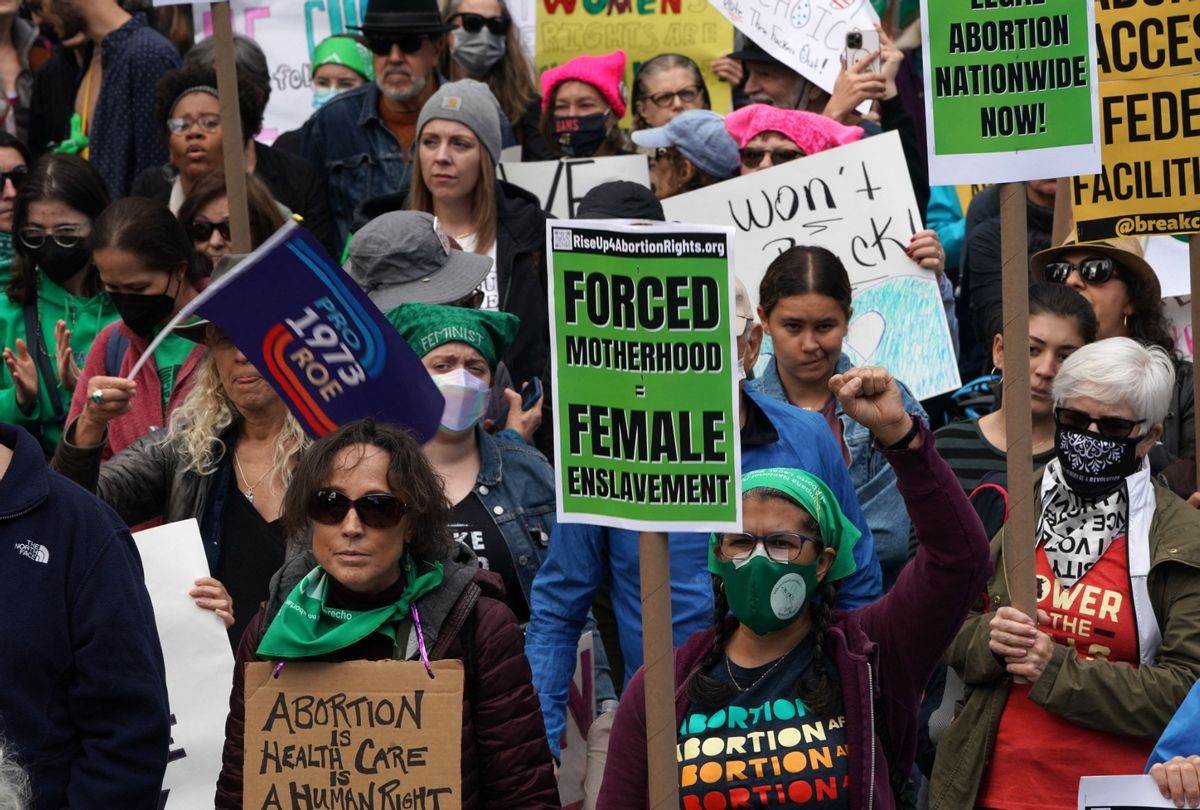One of the most comprehensive data sets on abortions yet released after the fall of Roe v. Wade, released Tuesday, has revealed that legal abortions fell by over 6 percent in the six months following the ruling as thousands of people have been forced to resort to illegal means or else put their bodies on the line as states across the country banned abortion.
The research, released by the Society of Family Planning, compared rates of abortions in the months before and after the Dobbs v. Jackson Women's Health Organization decision in June 2022. In the six months after the decision, researchers found, the number of legal abortions fell by an average of 5,377 per month, totalling 32,260 fewer abortions.
Predictably, the decrease in the number of people receiving the crucial health service was most concentrated in states where abortion bans were active for most of the six-month period in question – about 13 states by the end of the study period. In those states, there was a cumulative decrease of 43,410 abortions, compared to the months before the Dobbs decision, with an average of 7,235 fewer abortions per month across the states.
The data suggests that there were tens of thousands of people who weren't able to overcome hurdles like traveling to another state to access an abortion. "[T]he barriers that were in place were not surmountable," Ohio State epidemiology professor and report author Alison Norris told The New York Times. Even as some clinics expanded their capacity to accommodate an increase in the number of patients as many other clinics shut down, it was ultimately "insufficient to manage the losses," Norris continued.
While there was an overall decrease in abortions, the researchers found that there was an increase in the proportion of abortions obtained via telehealth services, perhaps underlining the importance of telehealth in protecting abortion access.
Even states where abortion bans were only in effect for a short period of time saw a large decrease, underlining the vast chilling effect that even the suggestion of a ban can have on abortion access.
In Indiana, abortion was only technically banned for seven days, last September, when a court shot down Republicans' near-total abortion ban. But the researchers found that that ban had lasting effects: While people only had 940 abortions in the state in April, there were only 550 abortions in December.
Other states where abortion bans were in place on and off throughout the study period saw a similar decrease in abortions compared with places where the ban was in place the whole time. Georgia's near-total six week abortion ban didn't go into effect immediately after Dobbs and was temporarily suspended last November when it was challenged in court — and yet, the state saw one of the largest decreases in abortions at 10,930, only second to Texas's 15,540.
And states like Arizona with putatively lenient bans that allow abortions up to the 15th week — a period still extremely early in a pregnancy — similarly saw their abortion rates fall far below pre-Dobbs levels.
States adjacent to others with abortion bans, meanwhile, saw an increase in abortions, showing the continued need for access. The states with the highest increases were abortion "islands" like Michigan, Florida and North Carolina, which are each adjacent to several states that have passed near-total abortion bans. However, states like Florida and North Carolina, which both ban the procedure past 15 weeks, are also likely to soon pass more restrictive bans.
Perhaps one of the reasons that there was such a sweeping decrease in abortions even where it wasn't fully illegal during the study period is that many abortion bans were written specifically to scare and confuse people. Lawmakers, legal experts and health care centers have reported having trouble parsing what is and isn't legal under current bans, while some providers are refraining from providing abortion care altogether over fear of losing their licenses or being prosecuted.
CORRECTION: This article has been edited since its original publication to note that abortion bans in several states are “near-total,” rather than “total,” due to exceptions contained in the laws. Reporting has found, however, that such exceptions are rarely granted in practice.



Shares